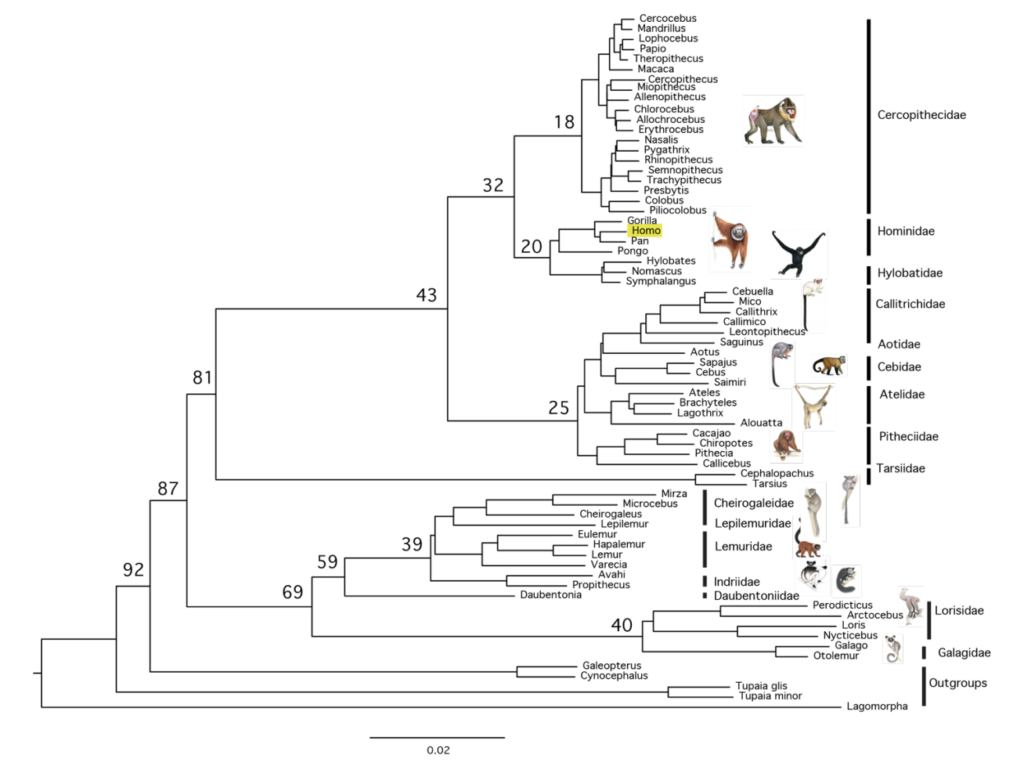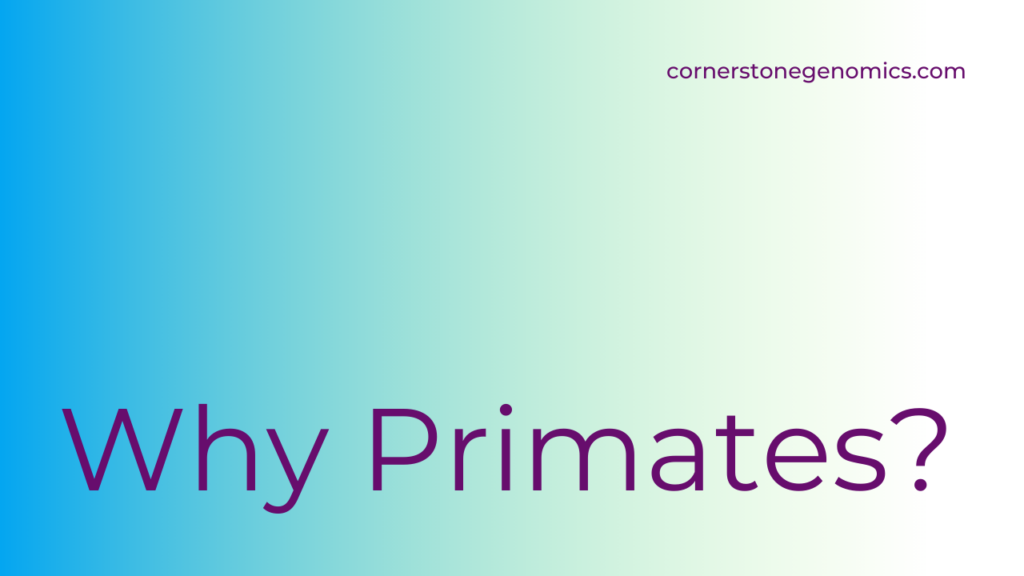Why Cornerstone Genomics’s Primate Approach is Pioneering the Future of Genomics
At Cornerstone Genomics, our mission has always been to harness the power of genomics and lead the charge in unraveling the intricate mysteries of rare diseases. A pivotal question has underpinned our research for years: “How do our genes evolve and change over time?” Despite the rapid advances in genomics, this core question has remained consistent and pressing.
Decoding the Phylogenetic Tree
Our world is replete with diverse species, each carrying a unique genetic code that has evolved over millions of years. This vast evolutionary journey is captured in what we call the ‘Phylogenetic Tree’. A significant subsection of this tree is dedicated to primates, our closest evolutionary relatives. Understanding this tree and its myriad branches not only offers insights into primate conservation but also unravels the complex tapestry of genetic evolution.

The Limitation of Human-Only Studies
While humans are a pinnacle of evolutionary complexity, studying our genes in isolation presents a limitation. We can’t fully grasp the vast spectrum of genetic evolution by focusing solely on humans. This realization is what led us to expand our horizons and specialize in primate genomics. By incorporating the genetic data of primates, we can delve deeper into understanding how genes have evolved, changed, and adapted over time.
Learning from the Past to Shape the Future
One of our core beliefs which CodeXome is built on is that the future of genomic discovery lies in using the past as a guiding compass. By looking at genetic changes over evolutionary time, we can filter out the “noise” in the data and focus on the most pertinent and informative genetic variations. This approach not only offers clarity but also provides actionable insights that are directly applicable to humans.
Addressing the Rare Disease Challenge
The complexity of rare diseases, especially when viewed from a purely human-centric lens, poses significant challenges. The rarity of these conditions means that the associated genetic variations are often so sparse that they become almost indistinguishable amidst the plethora of other genetic variations. Traditional methods, which rely on drawing associations between diseases and patient cohorts, often fall short when applied to rare diseases.
This is where CodeXome’s approach shines. We don’t confine our lens to how genes change in humans alone. Instead, we expand our view, looking at how these genes have evolved outside of humans over time. This wider perspective allows us to identify locations in the protein structure that can undergo change. By stepping back and observing how a gene has naturally evolved over time, we can pinpoint specific genetic variations with unparalleled precision.
Concluding Thoughts
At Cornerstone Genomics, we’re not just adding another dimension to gene interpretation; we’re revolutionizing it. By leveraging the evolutionary history of genes, we’re offering a fresh, comprehensive, and effective approach to genomic research. Our primate-centric method stands as a testament to our commitment to advancing the field of genomics and providing solutions for the myriad challenges posed by rare diseases.
Join us on this groundbreaking journey, where we look to the past to shape the future of genomics.
